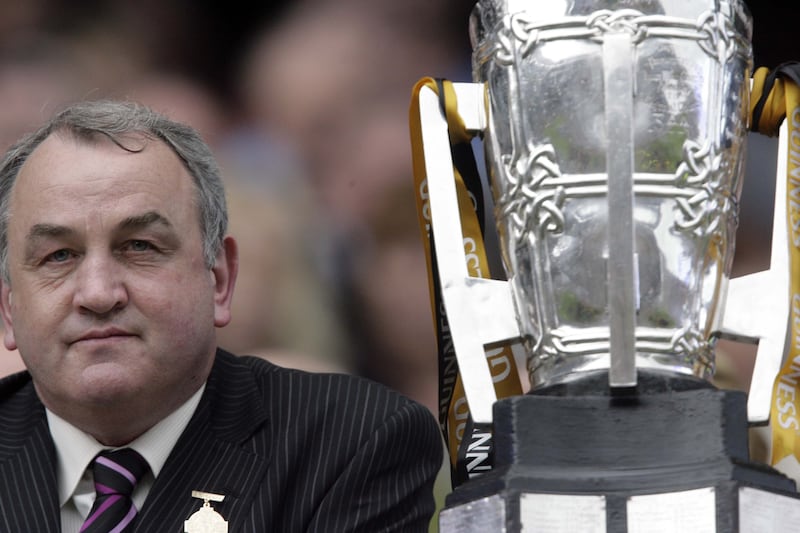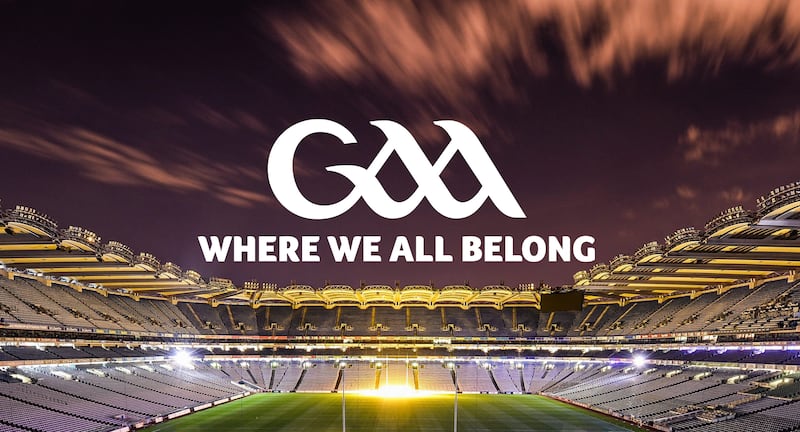Former GAA president Nickey Brennan was intrigued watching the merger of his employers Avonmore and Waterford Foods into Glanbia at the end of the 1990s. He wasn’t particularly involved in the creation of the new brand but the process registered with him when he took up office in the GAA in 2006.
“That required a major rebranding,” he recalls, “involving many elements of both companies, like culture and so on, but if we take the simplest aspect, signage – that had to be done on every item of plant, lorry, vehicle or letterhead.
“I had minimal involvement in all of that but I was very much aware of what was happening. As president it struck me that we weren’t displaying our essential brand, the three big letters, GAA. We had lots of different things that we had introduced over the years – competitions, schemes, whatever – but you would not recognise them as a GAA brand.”

“They were various logos attached to various projects and you would struggle to see where the GAA fitted in. We needed it to be seen more prominently.”
READ MORE
This process was initiated at the start of his presidency. In his presidential address after his first year, he outlined the association’s objectives for the following year, including “to recognise the GAA brand as a major asset and to invest in its development and maintenance to ensure it maintains its relevance in the future” and “to complement the brand review by helping the GAA reposition itself by joining with prestigious brands in the marketing of our games”.
On Tuesday, Brennan is a guest speaker at the Design and Crafts Council Ireland (DCCI) event in the Croke Park Museum, entitled Back to the Future of the GAA – by Design, a key event in the DCCI’s Design Week.
“Every year the DCCI – which coincidentally is headquartered in Kilkenny – have a design week with a specific theme and this year’s theme is heritage. They looked at the fact that in 2008 the GAA undertook a major rebranding exercise and decided to devote an event to looking at the association in those terms.”
Brennan set up the branding or identity review, which conducted extensive interviews with a view to establishing what the image of the GAA was among various stakeholders.
He also looked at the comparative lack of impact of the association’s own visuals, logo etc – particularly in a world where they were now engaging in sponsorships with high-profile corporations, which were very careful of their own image projection.

“I rang Jim Dunne, one of the original people in the Kilkenny Design workshops. He was working for the Brand Union at that stage and after we had spoken about it and awarded the contract to them, he deferred a decision to leave the company for a year so that he could be involved in the project. Dermot O’Shea was another involved in the team.”
Both Dunne, a brand consultant, and O’Shea, founder of digital product consultancy Wondr, will also be speaking at the conference. Brennan is to give an address on the rebranding process he initiated. Most familiar to many people will be the Brand Union’s redesigned GAA lettering, launched in 2008, which is now the ubiquitous logo of the association.
“It’s the story behind that,” says Brennan, “which I’m telling in the first session. Paul Galvin, as someone with a GAA profile but also heavily involved with design, hurley maker Sean Torpey and Siobhán Doyle from the National Museum are also speaking. Eileen Dunne is the moderator.
“Themes include how will the GAA project itself now that social media is so prevalent? What implications does that have for presenting ourselves to a different audience in a different way? I haven’t been that involved in the event beyond agreeing to contribute to it on the basis of my involvement in the rebranding.
“What I’m talking about is where did this come from and what was the thinking behind it. This may not resonate in a major way with people on the ground but it’s important from the perspective of setting the GAA up for sponsorships. When it came to things like the Guinness and Bank of Ireland partnerships, their brands were the dominant features and the GAA brand wasn’t always robust enough to hold its own.
“My thinking was, by all means have them on board but let the GAA brand be the most visible.”
















